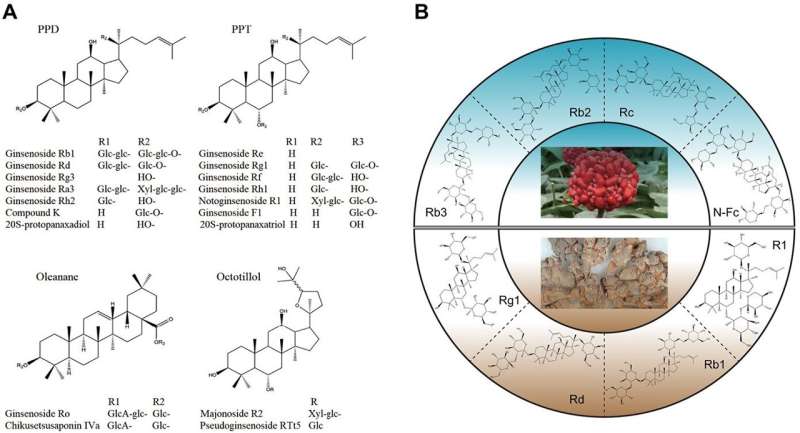This article has been reviewed according to Science X's editorial process and policies. Editors have highlighted the following attributes while ensuring the content's credibility:
fact-checked
peer-reviewed publication
proofread
Study reviews ginsenoside biosynthesis and regulation in Panax notoginseng

Panax notoginseng, a perennial herb central to traditional Chinese medicine, is celebrated for its health benefits, such as promoting blood circulation and reducing inflammation. Its key components, ginsenosides, are associated with various pharmacological activities, including cardiovascular protection and anti-cancer properties.
Rising demand and limited natural resources highlight the need for innovative strategies to enhance ginsenoside production and ensure sustainable use. These challenges drive the necessity for in-depth exploration of ginsenoside biosynthesis pathways.
Conducted by researchers from the State Key Laboratory for Quality Assurance and Sustainable Use of Dao-di Herbs, this study was published in Horticulture Research. It reviews the intricate biosynthesis and regulation of ginsenosides in Panax notoginseng, focusing on recent advances in understanding the herb's phytochemical and pharmacological attributes. The study also discusses biotechnological strategies to enhance ginsenoside yields.
The review meticulously examines the key phytochemical constituents of P. notoginseng, highlighting ginsenosides, amino acids, and polysaccharides. It outlines the biosynthesis of ginsenosides, pinpointing essential enzymes like cytochrome P450s and uridine diphosphate glycosyltransferases that drive their structural diversity.
The study emphasizes transcription factors, including MYB, bHLH, and WRKY families, that regulate ginsenoside biosynthesis. It also explores environmental influences such as light, temperature, and soil conditions on ginsenoside production. Biotechnological methods, including tissue culture and microbial cell factories, are identified as promising avenues to boost ginsenoside output and overcome current cultivation challenges.
Dr. Linlin Dong, the corresponding author, commented, "This review highlights the critical role of understanding ginsenoside biosynthesis and regulation in Panax notoginseng. By leveraging modern omics technologies and biotechnological advancements, we can significantly enhance ginsenoside quality and production, enabling sustainable cultivation and expanded therapeutic applications."
The findings offer essential guidance for the sustainable development of P. notoginseng. By identifying key enzymes and transcription factors, the study supports the breeding of superior P. notoginseng varieties and optimization of production techniques. These innovations are vital for meeting the increasing demand for ginsenosides in pharmaceuticals, food products, and health care, ultimately broadening the applications of P. notoginseng in modern medicine.
More information: Guangfei Wei et al, Panax notoginseng: panoramagram of phytochemical and pharmacological properties, biosynthesis, and regulation and production of ginsenosides, Horticulture Research (2024). DOI: 10.1093/hr/uhae170
Journal information: Horticulture Research
Provided by TranSpread




















